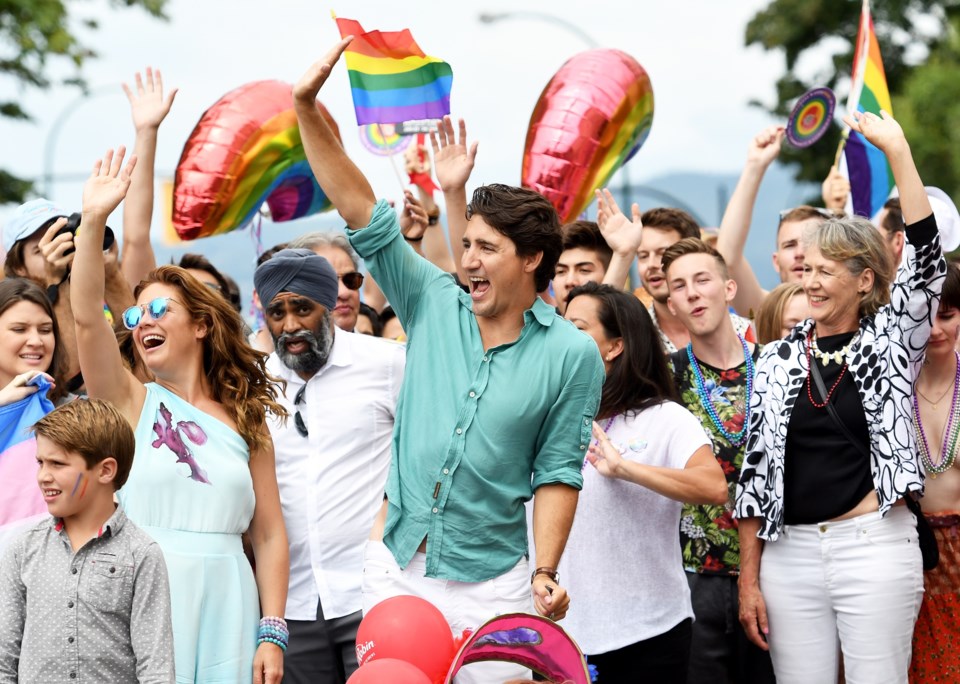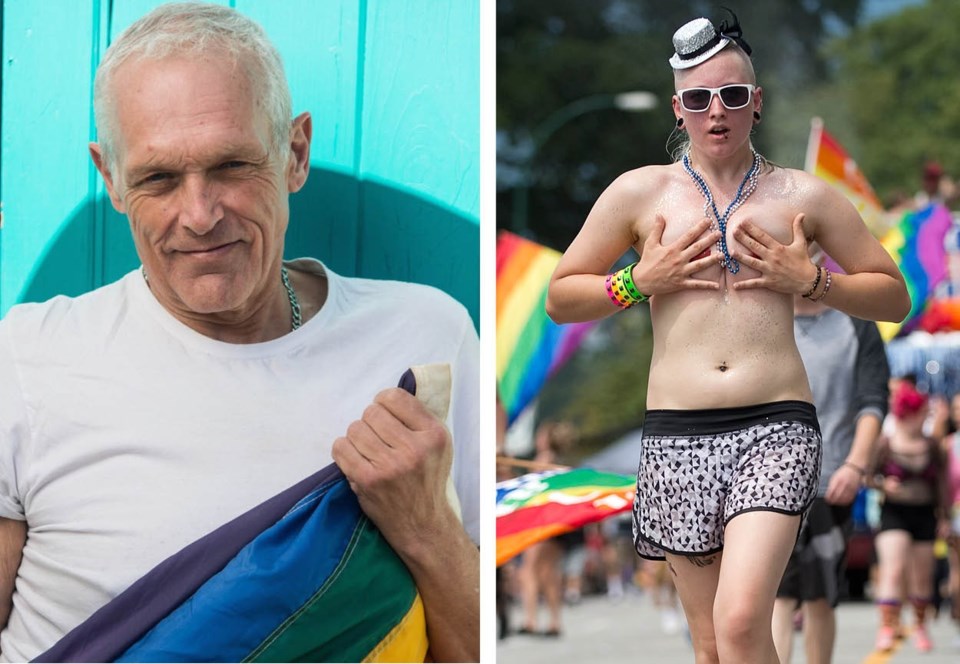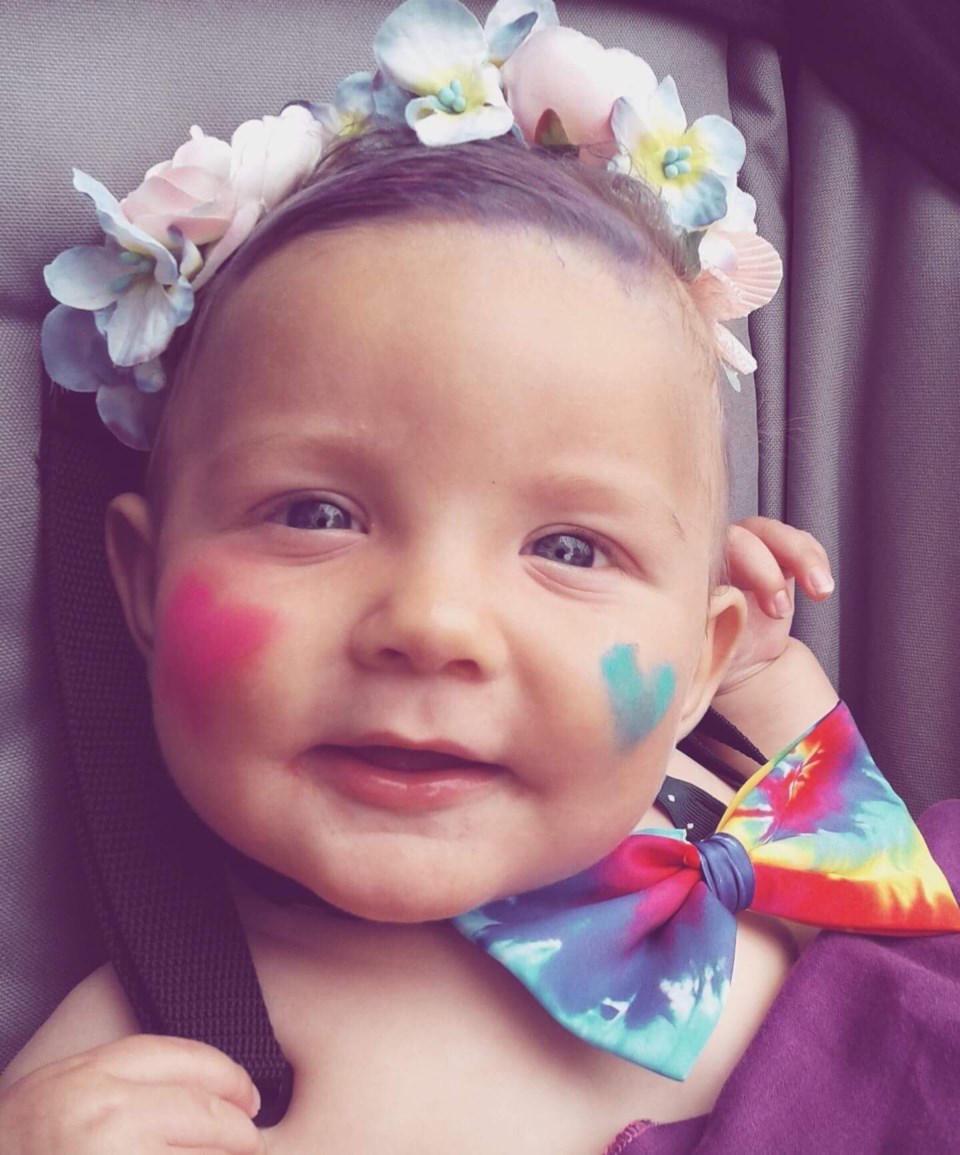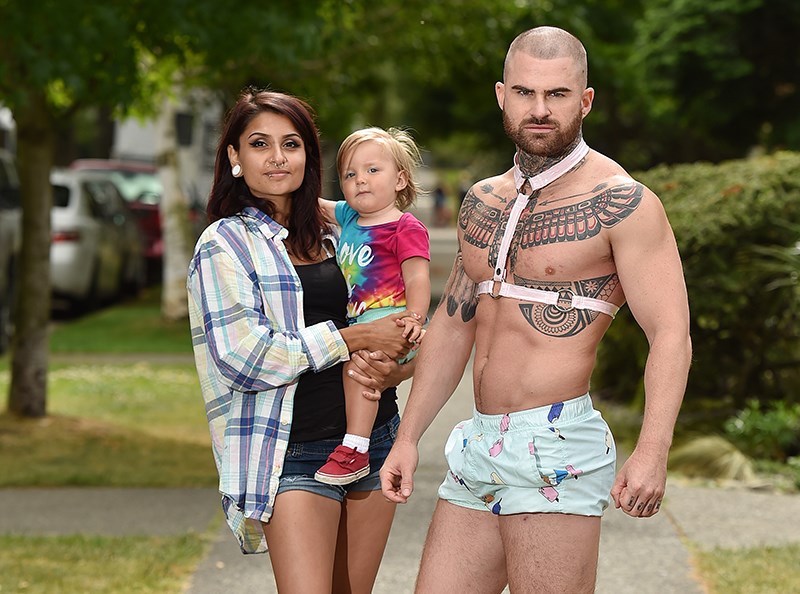With glitter in the air, an array of colourful floats, dazzling drag queens, and a sea of onlookers dressed in rainbow garments, the Vancouver Pride Parade seems like the perfect place for anyone and everyone to celebrate.
It wasn’t always that way, though.
At the first documented Pride march, in 1978, participants reportedly feared for their safety, quizzical onlookers only paused briefly on sidewalks, and cardboard signs were wielded in place of elaborate floats and corporate swag. In those early years, nudity, gender-bending and outrageous costumes were dispensed as provocation, sparking essential conversations, reactions and pushing boundaries further.
Thirty-nine years later, how things have changed. Naked breasts and exposed butts are par for the course – no more provocative than someone smoking on the street. And parade participants and attendees now include families, political figures, businesses and allies alongside pivotal figures in the LGBTQ+ community.
It’s only inevitable that new priorities are taking root.
“We ask people to be conscious of the family element of Pride and make sure that’s front of mind for them,” says Kieran Burgess, co-executive director of the Vancouver Pride Society. “We have this saying, to ‘express yourself not expose yourself.’”
Burgess explains that, although there are no set policies as to what people can and can’t wear to the parade, they must abide by the law. “Anything that wouldn’t be acceptable on a normal day in the street is something we have to take into consideration.”

Burgess believes that this attitude is necessary because it makes the parade more appealing to families, and that it’s important for children to be exposed to the LGBTQ+ community from a young age.
“People growing up around Pride will have less prejudice. They’ll be more open to different lifestyles and different ways of being,” he says.
AJ Maharaj started bringing her son, Adam, to Pride in 2016, when he was not even a year old. She agrees that bringing children to the parade and normalizing the LGBTQ+ community will help make her child more well rounded and open-minded.
“I just want him to grow up in that culture and accept people for who they are, and not see certain things as ‘weird,’” she says of her son. “I want him to see [the LGBTQ+ community] as a super normal thing. That way there won’t be any point when he grows up where he’ll have to accept it, because it will already be normal for him.”
And the young mother, who commutes from Mission for the festivities, doesn’t have any qualms about parade goers continuing to express themselves by being nude.
“I think your body is just your body, and people’s bodies, [especially] women’s, are overly sexualized,” she says. “And I think it’s important to show kids that it’s not inappropriate and it’s just unnecessary to sexualize the human body. It’s totally normal to be naked, and I don’t want him to see the female body differently than the male body just because it gets exposed less.”
Historically, Pride boasted more nudity and fetishwear than seen now, with parade floats such as Foreskin Pride, which was banned in 2013 after The Canadian Foreskin Awareness Project’s Glen Callender went full-frontal in the parade prior, and fetish floats, which people have noted seeing less of in recent parades, offering a bevy of bodies in various states of undress.
Allan Morgan, a 62-year-old actor who has been attending Vancouver Pride since the ’80s, has noticed this change, and although he loves that families and allies are attending Pride, he thinks the parade should remain a place for boundary pushing and self-expression.
For him, the change really became evident the year he yelled at Mayor Gregor Robertson to take his shirt off while he was walking in the parade, and a group of families looked at him as though he was disrupting the event.
“We used to yell stuff all the time!” Morgan says. “Now everyone just sits there quiet and thinks I’m crazy for yelling things.”

That’s not enough for him to wish families didn’t attend, though.
“I love families at Pride,” he says. “I went with my mom one year, and my brother, who is also gay. We had to make up some excuses for the fetish floats but, overall, she loved it! We took our nephew to Pride one year, and we had a lovely talk about Pride and what it means. It’s important to normalize that for kids. They see joy, they see fun, they see people being themselves, it’s a great introduction.”
Morgan says that he has no problem with nudity in the parade, either; he feels it is liberating, and agrees that parents should not be concerned about their children witnessing something as normal as the human body.
“There’s no problem with nudity, and it’s honestly great to see people who would never end up in a magazine being proud of their bodies. If that’s ‘boundary pushing’ so be it,” he explains.
Morgan also mused that perhaps the reason the parade has toned down in recent years is because nudity simply isn’t shocking any more. “What’s still shocking to people is to see a man, dressed as a male, just wearing [lipstick].
That red lip has so much controversy and I think that is so cool,” he says. “I think the idea of gender being more than what people think it is, shocks people. It’s boundary pushing. Because it’s a fucking patriarchy that we are living in, people do not want to see men mimicking women, or being inspired by women.”
Maharaj has noticed this, as well. Although she has not faced any criticism for bringing her son to Pride, she has had people comment on the way she dresses him. She explained that many people assume he is a girl just because of his brightly coloured clothes.

“I feel like some people judge me for dressing him in really colourful clothes, or they’ll think he’s a girl, and they look at me like I’m emasculating him or something.”
Which is a potent reminder why Pride is important for all to attend.
“Reminding kids that everyone’s different and that’s okay, that everyone has a different way of being and that it’s not a choice, but it’s something to celebrate,” says Burgess. “That’s great to teach children.”



